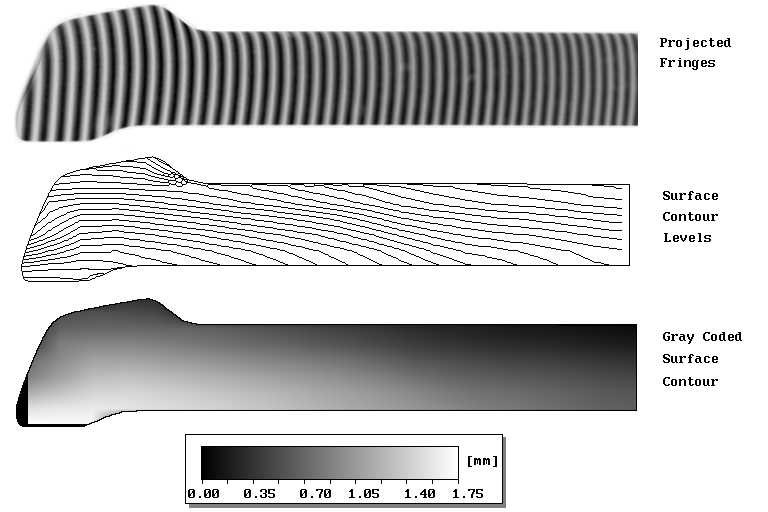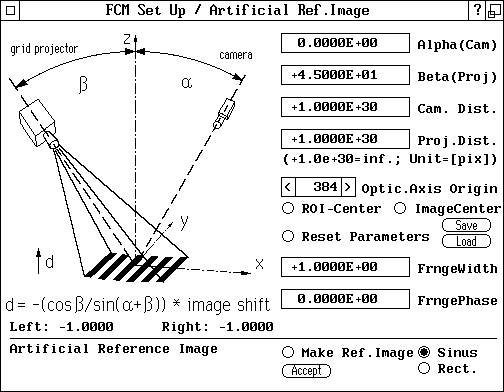last update 1/18/2000
Fringe Correlation Method
The Fringe Correlation Method (FCM) is designed for high accuracy geometrical
measurement of deflection or deformation of smooth objects or surfaces. A very important
advantage of the method is the fact that the surfaces or objects may move during the image
acquisition. Only one single image has to be acquired for analysis of the surface deflection.
Therefore, using high speed cameras, a high speed motion analysis of the surface deflection
is possible.
The basic idea of this method is to use the in-plane displacement of projected fringe patterns
to determine out-of-plane surface deflections. Setup and usage of the FCM is very simple: A
regular slide projector with a simple black/white fringe slide projects a fringe pattern on the
surface at a distinct angle relative to the surface normal vector (figures 1 and 2). Any local
out-of-plane deformation or deflection of the surface results in a local displacement of the
fringe pattern. A camera, set up at a different angle relative to the surface normal vector,
acquires images of the fringes in a reference position and in the deflected position. The
fringe displacement can be detected and determined at subpixel accuracy by using
correlation techniques in frequency domain. A transformation factor, the FCM-factor, is used
to transform displacements into deflection values. The resolution of the method can be
influenced by changing the angles between projector and surface normal vector and between
projector and camera (see figure 2).

Fig.1: Typical Surface Deflection Measurement: Helicopter Rotor Blade with Special Tip Shape;
Projected Fringes and Measured Surface Contour after FCM Analysis

Fig.2: Setup of projector and camera for deflection measurement
Back to FIBUS Home Page
Back to Image Processing
Copyright © 2000 The
FIBUS Research Institute, Dr. Reinert H. G. Mueller;

